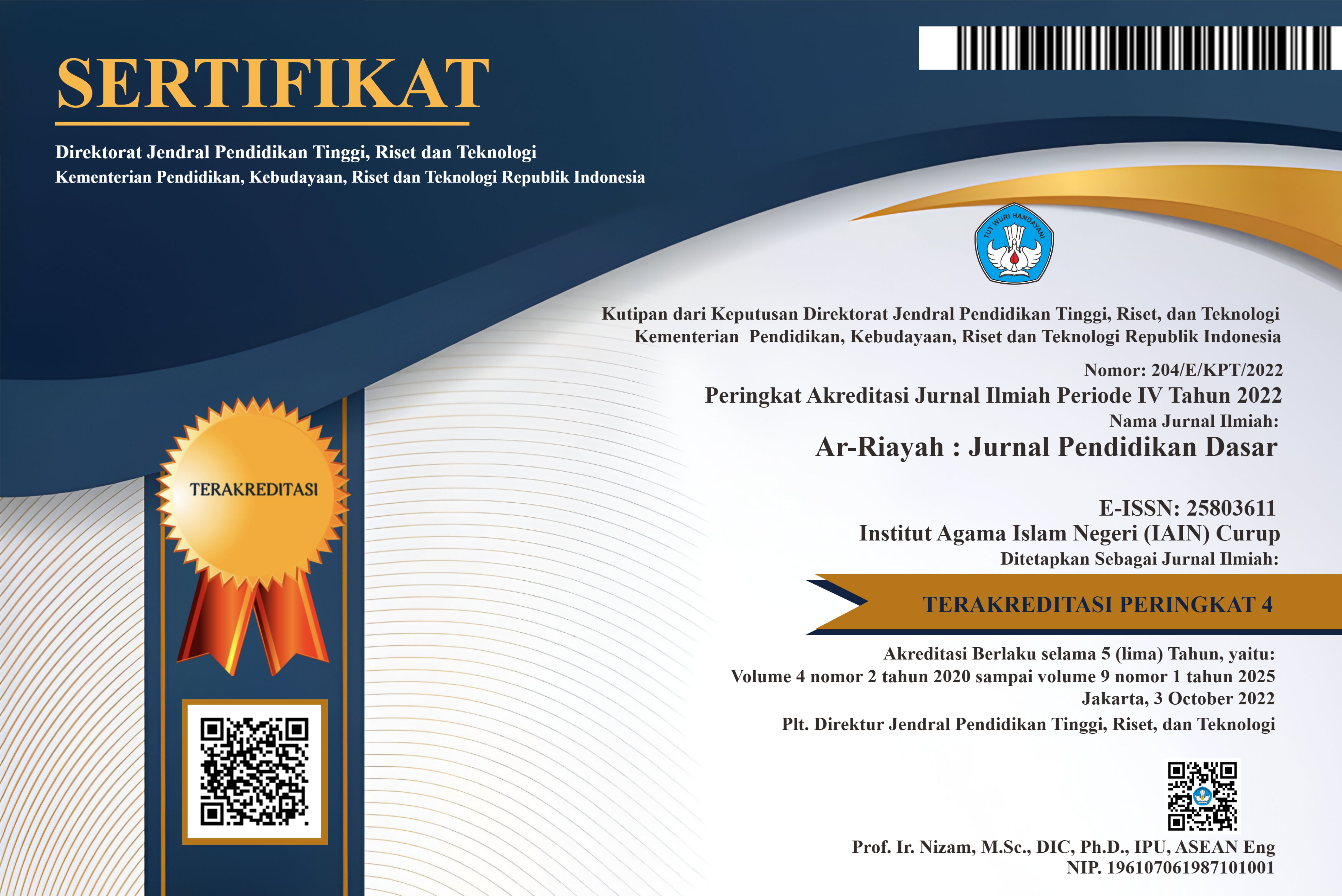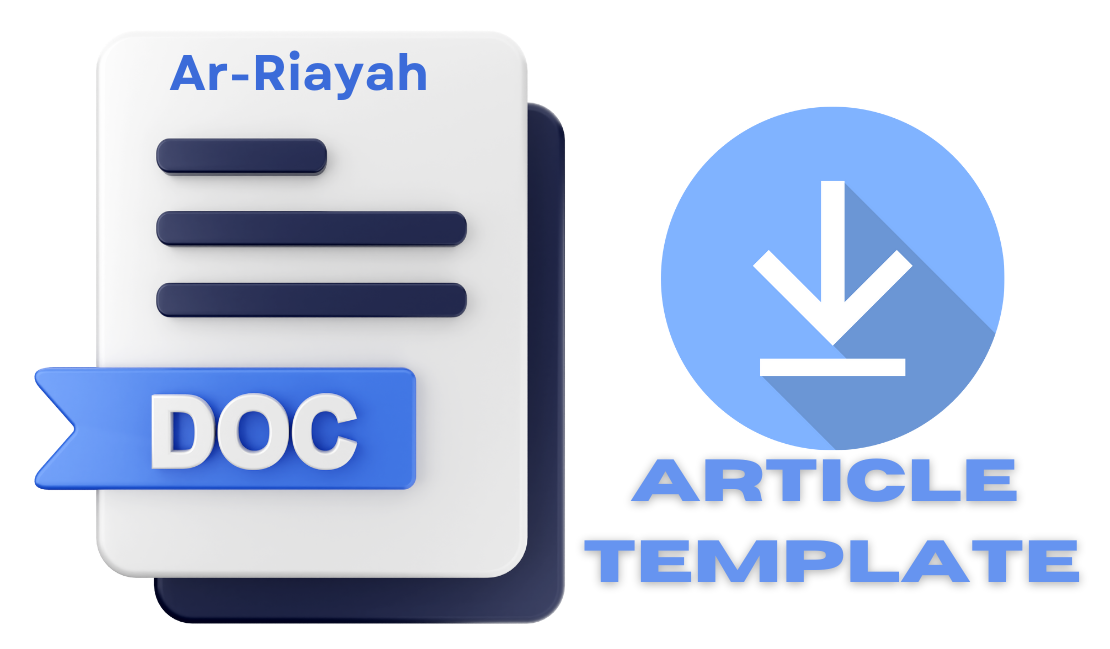Pixel Art untuk Membangun Pemahaman Siswa Tentang Konsep Dasar Luas
DOI:
https://doi.org/10.29240/jpd.v5i2.3251Keywords:
Area, Design Research, Pixel ArtAbstract
Merely providing the formula of area in the learning activity can impede students’ deep understanding of the concept of area. This study was a qualitative design research that aimed to develop a learning design by using the context of pixel art and grid paper to build students' knowledge of the concept of area measurement. There were three stages in this study, namely, preparation, teaching experiment, and retrospective analysis. The subjects of this study were 25 students of P3 (Primary 3) SD Global Inbyra School. However, the discussion focused on a group consisting of three students. The research subjects were given a mini lesson consisting of 2 meetings. It can be seen from the first meeting that the pixel art drawn by the students built on their initial measuring ability because they automatically notice that half square and half square make up 1 square. At the second meeting, students demonstrated their ability to estimate the number of squares (area) in an irregular picture. In the activity of making any shapes that have an area of 20 square units, students were aware that to find the area of the rectangle, they can use repeated addition which can be directed to the area of the rectangle (p x l).
Downloads
References
Bakker, Arthur, and Dolly van Eerde. “An Introduction to Design-Based Research with an Example From Statistics Education,†2015. https://doi.org/10.1007/978-94-017-9181-6_16.
Barrett, Jeffrey E, Craig Cullen, Julie Sarama, Douglas H Clements, David Klanderman, Amanda L Miller, and Chepina Rumsey. “Children’s Unit Concepts in Measurement: A Teaching Experiment Spanning Grades 2 through 5.†Zdm 43, no. 5 (2011): 637.
Baturo, Annette, and Rod Nason. “Student Teachers’ Subject Matter Knowledge within the Domain of Area Measurement.†Educational Studies in Mathematics 31, no. 3 (1996): 235–68.
Caitlin, Dewey. “Nostalgia, Norwegian Money and the Unlikely Resurgence of Pixel Art.†Washington Post, 2014. https://www.washingtonpost.com/news/theintersect/wp/2014/10/14/nostalgianorwegian-%0Amoney-and-the-unlikely-resurgence-ofpixel-art/.
Dickson, L. “Area of a Rectangle.†In Children’s Mathematical Frameworks: A Study of Classroom Teaching, edited by D Johnson, 76–88. Berkshire: NFER-Nelson, 1989.
Espejo, Tracy, and Ashley Deters. “Area or Perimeter: Using Representations for the Real World.†Ohio Journal of School Mathematics 63 (2011): 11–16.
Fauzan, Ahmad. Applying Realistic Mathematics Education (RME) in Teaching Geometry in Indonesian Primary Schools. Citeseer, 2002.
Ferrer, Bellasanta B, Bobbie Hunter, Kathryn C Irwin, Maureen J Sheldon, Charles S Thompson, and Catherine P Vistro-Yu. “By the Unit or Square Unit?†Mathematics Teaching in the Middle School 7, no. 3 (2001): 132–37.
Jirotková, Darina, Paola Vighi, and Renáta Zemanová. “Misconceptions about the Relationship between Perimeter and Area.†In International Symposium Elementary Mathematics Teaching, 221–31. Prague, 2019.
Machaba, France M. “The Concepts of Area and Perimeter: Insights and Misconceptions of Grade 10 Learners.†Pythagoras 37, no. 1 (2016): 1–11.
Moyer, Patricia S. “Links to Literature: Using Representations to Explore Perimeter and Area.†Teaching Children Mathematics 8, no. 1 (2001): 52–59.
Muir, Tracey. “Developing an Understanding of the Concept of Area.†Australian Primary Mathematics Classroom 12, no. 4 (2007): 4–9.
Oldham, Elizabeth, Ton Van Der Valk, Harrie Broekman, and Sarah Berenson. “Beginning Pre-Service Teachers’ Approaches to Teaching the Area Concept: Identifying Tendencies towards Realistic, Structuralist, Mechanist or Empiricist Mathematics Education.†European Journal of Teacher Education 22, no. 1 (1999): 23–43.
Putrawangsa, Susilahudin, AGUNG LUKITO, SITI MAmin, and MONICA WIJERS. “Educational Design Research: Developing Students’ Understanding of the Multiplication Strategy in Area Measurement.†Master Thesis. Surabaya: Universitas Negeri Surabaya, 2013.
Rejeki, S, and R I I Putri. “Models to Support Students’ Understanding of Measuring Area of Circles.†In Journal of Physics: Conference Series, 948:12058. IOP Publishing, 2018.
Walle, John A Van de, Karen S Karp, and Jennifer M Bay-Williams. Elementary and Middle School Mathematics. Pearson Education UK, 2016.
Walton, Candide, and Tamela Randolph. “Alternative Methods for Understanding Area Formulas.†Illinois Mathematics Teacher 64, no. 1 (2017): 40–45.
Zulkardi, Zulkardi. “Developing a Learning Environment on Realistic Mathematics Education for Indonesian Student Teachers.†University of Twente, Enschede, 2002.
Downloads
Published
How to Cite
Issue
Section
Citation Check
License
Authors who publish with Ar-Riayah: Jurnal Pendidikan Dasar agree to the following terms:
Authors retain copyright and grant the journal right of first publication with the work simultaneously licensed under a Creative Commons Attribution-NonCommercial-ShareAlike 4.0 International License (CC BY-NC-SA 4.0) that allows others to share the work with an acknowledgment of the work's authorship and initial publication in this journal.
Authors are able to enter into separate, additional contractual arrangements for the non-exclusive distribution of the journal's published version of the work (e.g., post it to an institutional repository or publish it in a book), with an acknowledgment of its initial publication in this journal.
- Authors are permitted and encouraged to post their work online (e.g., in institutional repositories or on their website) prior to and during the submission process, as it can lead to productive exchanges, as well as earlier and greater citation of published work (See The Effect of Open Access).










